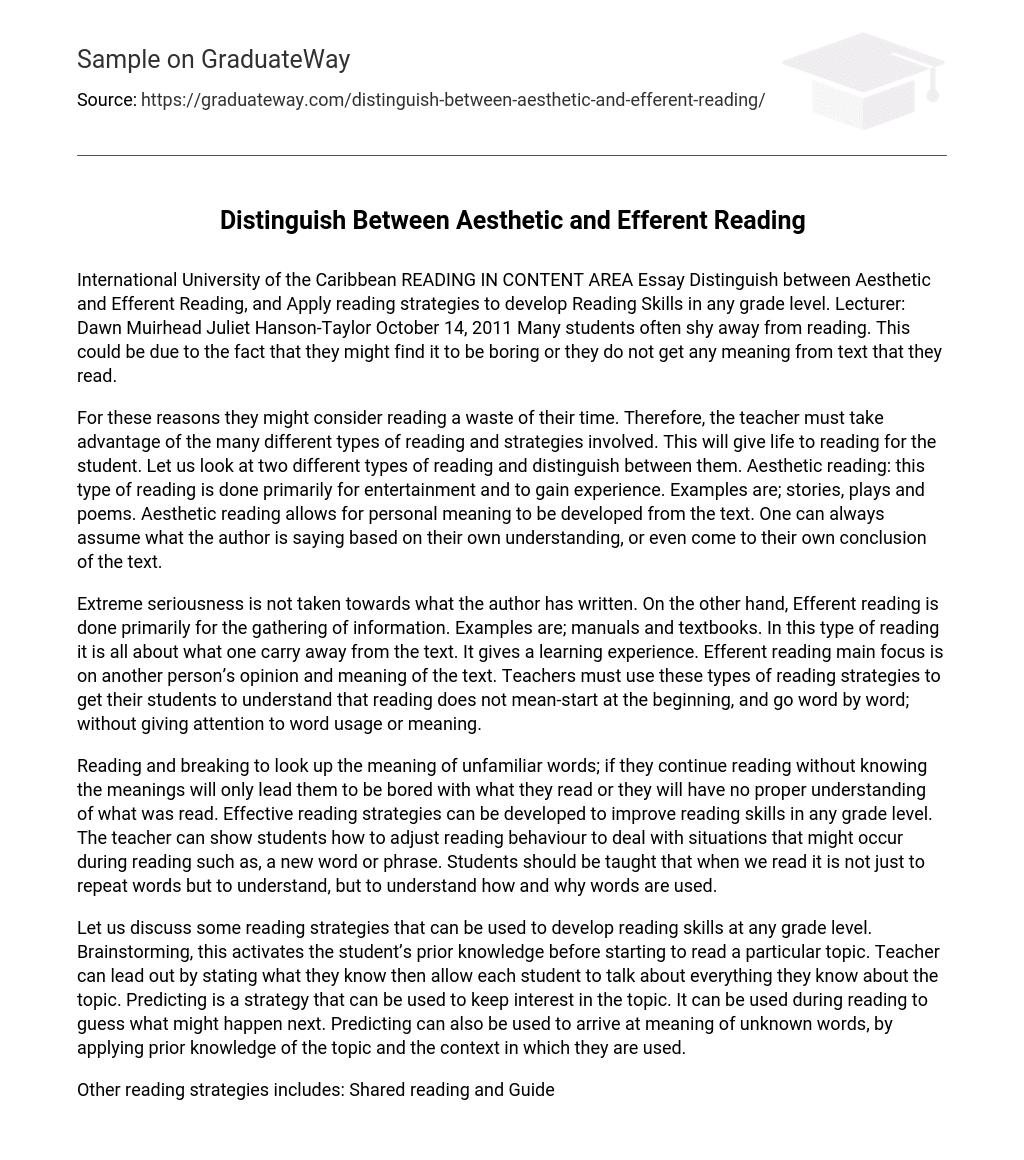Many students frequently avoid reading, possibly because they find it tedious or do not derive any significance from the text they consume.
Some individuals may not find reading worthwhile, so teachers must explore various reading methods to engage students. Two distinct types of reading are aesthetic reading and educational reading. Aesthetic reading serves as a form of entertainment and personal growth, such as enjoying stories, plays, and poems. It allows readers to interpret the text based on their own understanding and draw their own conclusions.
The author’s writing is not treated with extreme seriousness. However, efferent reading is mainly done to gather information, such as reading manuals and textbooks. This type of reading emphasizes what one takes away from the text and provides a learning experience. The main focus of efferent reading is to understand another person’s opinion and interpretation of the text. Teachers should implement these reading strategies to help students understand that reading does not simply involve starting at the beginning and going word by word, but to also pay attention to word usage and meaning.
When students come across unfamiliar words while reading, they should take the time to look up the meaning. If they continue reading without understanding the meanings, it can lead to boredom or a lack of comprehension. It is important to develop effective reading strategies to improve reading skills at any grade level. Teachers can help students adjust their reading behavior to handle situations like encountering new words or phrases. Students should be taught that reading is not just about repeating words, but understanding how and why words are used.
Here are some reading strategies that can be implemented to enhance reading skills across all grade levels. Brainstorming is an effective method to stimulate students’ existing knowledge before beginning to read a specific topic. The teacher can initiate the discussion by sharing their understanding and then allow each student to contribute their own thoughts and knowledge on the subject. Predicting is another valuable strategy that maintains interest in the topic. It can be employed while reading to make guesses about the upcoming events. Furthermore, predicting can assist in determining the meanings of unfamiliar words by utilizing prior knowledge about the topic and analyzing the context in which they are used.
Other reading strategies include: Shared reading and Guided reading. In shared reading, the teacher reads the text aloud while the students follow along. The teacher also focuses on pronouncing familiar and unfamiliar words correctly. As the students follow along, they imitate the teacher’s reading style. In guided reading, students are grouped based on their reading level and receive support from the teacher as they read. They also have opportunities to read independently. If they encounter new words, they are guided in pronouncing them correctly and understanding their meaning.
The various types of reading, such as aesthetic and efferent, serve as helpful tools for assisting students in determining the appropriate approach to take when approaching a specific topic. It is crucial that students always understand the reasons and purpose behind their reading. Are they reading for entertainment or for obtaining information? Are they focusing on their own opinions or on the opinions of others? By employing the discussed strategies, students are encouraged to perceive reading as an engaging and dynamic activity. Let’s strive to make reading enjoyable!
Reference:
- www. nclrc. org/essential/reading/stratread. hlm





